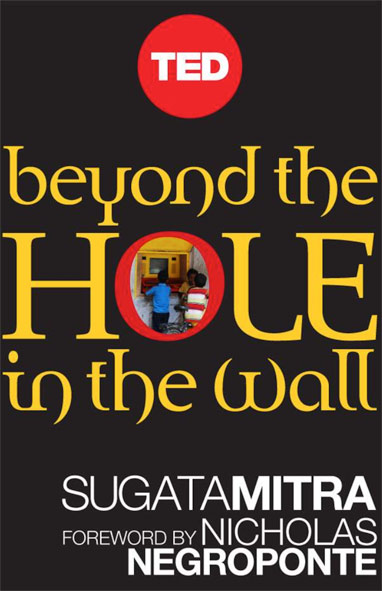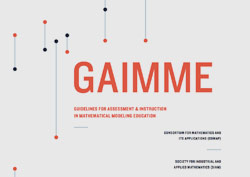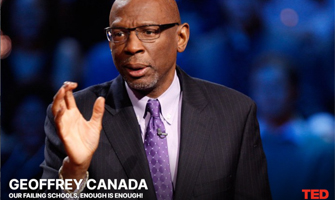
You CAN Get There from Here
[Biswarup Ganguly, CC BY 3.0, via Wikimedia Commons]
Education holds transformative power when it takes into account diverse learners’ needs, bridging gaps, and empowering individuals and communities alike. Educators strive to meet learners where they are and are inspired by stories of intrepid learners who overcome seemingly insurmountable obstacles on their educational journeys.
Some children enter school eager and prepared to learn, while others find school daunting, distressing or simply unimportant given the challenges they face at home or elsewhere. Offering educational experiences that meet learners’ needs can have transformative effects for individuals and communities.
In “Culturally Responsive Pedagogies,” in Quality Education as a Constitutional Right: Creating a Grassroots Movement to Transform Public Schools, Lisa Delpit points out that children enter school with differing knowledge and strengths. What many people think of as basic skills, such as letter names or number recognition, are not “basic” to all children. She describes an experience in her early years of teaching when one of her first graders was judged to be “failing” in math, unable to calculate the amount of money represented by pictures of coins on a worksheet. Delpit was advised to refer him for placement in special education. Before doing so, she visited his home and discovered that because his mother was suffering with addiction, he was responsible for his family’s laundry. He had a solid working knowledge about coins and money. “I assumed that because he could not do a task in my classroom that was decontextualized and paperbound, he could not do the real-life task it represented. It is often very difficult for teachers, particularly those who may not be from the same cultural or class background as the children, to understand where strengths may lie.” For many children from poor communities, she says “critical thinking skills are basic. Those are the skills they come to us with. They are accustomed to being more independent. Often they are familiar with real-life problems and how to solve them.”
To be successful, educators need to find ways to leverage the emotional aspects of learning, because “we only think deeply about things we care about.”
As neuroscientist, psychologist, and former public school teacher Mary Hellen Immordino-Yang points out in her book Emotions, Learning and the Brain, emotions are powerful motivators of learning, and therefore, to be successful, educators need to find ways to leverage the emotional aspects of learning, because “we only think deeply about things we care about.”
Sometimes students need help in overcoming emotional barriers that cause them to resist learning or “tune out.” As the late Robert Moses said, “I’ve seen some kids who are just too angry to learn. There is the issue of breaking through, finding a way to penetrate into that anger and hostility…Their stance at that level, ‘I’m not going to let you teach me!’ … It’s their response to the structures they encounter and the educational system as they perceive it. For all of the kids, there are huge chunks of their lives that we just don’t see…sometimes the debris of it rains down on us as if from a sudden thunderstorm. That some of the kids even keep coming to school instead of being lost to the streets suggests some remarkable reserve of strength, some hope for something better that we are obliged to meet. If the kids can find their voice, the door to change begins to open much wider.”
Moses tells the story of James, a high school student in Jackson, Mississippi. After several years of working together, Moses was finally able to engage James in using a graphing calculator to solve math problems, to the point where he began to step up and take the lead in helping others in the class. “Mr. Moses said he knew I could do better and that I needed to come out of myself. You wanna hear him but at the same time you’re sayin’, ‘Why you talkin’ to me?’ Then it started clickin’ in my brain. I am smart. I can do things! And the next day I started to do more stuff.”
Intrepid Learners
Most people who have spent time with young children have observed their innate curiosity and eagerness to learn. In an ideal world all children would have educational opportunities that build on and sustain this natural desire to learn. While the reality is that not all children have such access, there are inspiring stories of individuals who have excelled in the absence of a traditional or formal education.
One example is Tara Westover, who shares her moving story in her remarkable memoir Educated. Westover grew up in the mountains of Idaho and had never set foot in a classroom until she entered Brigham Young University at the age of 17. Having had essentially no prior schooling at home or in a school, she taught herself what she needed to score well enough on the ACT exam to be considered at Brigham Young. Westover went on to become a Cambridge scholar, earning her PhD in intellectual history from Trinity College.
Another example is Yong Zhao, raised by illiterate parents in a remote Chinese farming village. Zhao describes his early learning experience: “My teachers in the village school were not well trained to make me follow a prescribed reading curriculum, so I was able to read anything I could find instead of a series of carefully selected graded reading materials. The assortment of used books, magazines, and newspapers my father collected for wrapping noodles in the village noodle factory not only taught me to read but also, more importantly, exposed me to a broad range of topics, way beyond what a very carefully designed curriculum can offer.”
“Groups of children using the internet, can learn anything, by themselves, under the right circumstances.”
Sugata Mitra claims that data from his “Computer in the Wall” experiments show that “groups of children using the internet, can learn anything, by themselves, under the right circumstances.” He argues that his findings suggest that the role of teachers needs to change; the teacher’s job is not to provide the answers but to pose “Big Questions” that motivate their students to do their own investigations.
Learning via the internet opens doors but also poses new challenges; students need to discern the information they need from the information they don’t need, a skill that Mitra says needs to become mainstream. They also need to be able to differentiate reliable information from misinformation and disinformation. As Sir Ken Robinson and Lou Aronica put it in their book Creative Schools: The Grassroots Revolution That’s Transforming Education, “There are immense benefits in the digital revolution for the education of all young people. At the same time, the need has never been greater for them to separate fact from opinion, sense from nonsense, and honesty from deception. Clear, critical thinking should be at the heart of every discipline in school and a cultivated habit outside it too.”

Improbable Scholars
How do we determine if our schools are preparing students for a meaningful future in our society and improve the schools that are not living up to those standards? Explores the current crisis in American education and four districts that have made positive changes.

One World School House
There may be a young girl in an African village with the potential to find a cancer cure. A fisherman’s son in New Guinea might have incredible insight into the health of the oceans. By combining technology with the best teaching practices, we can foster students who are capable of creative approaches to real-world problems.

Beyond the Hole in the Wall
Sugata Mitra’s now famous experiments have shone light on the immense capacities that children have for learning in self-composed and self-regulated groups.
In the series: Challenges and Opportunities
Related articles:
Further Reading »
External Stories and Videos

The Other Segregation
Whitney Pirtle, The Atlantic
The public focuses its attention on divides between schools, while tracking has created separate and unequal education systems within single schools.

Math with Meaning
COMP & SIAM
Math educators provide helpful guidelines for transforming traditional math equations and problems in a way that gives students as early as pre-K the foundation to tackle open-ended, reality-based questions collaboratively—questions that they find meaningful and can enhance their future. (PDF)


Our Failing Schools: Enough Is Enough
Geoffrey Canada, TED
Why does our education system look the way it did 50 years ago? Millions of students were failing then, as they are now—and it’s because we’re clinging to a business model that clearly doesn’t work. Education advocate Geoffrey Canada dares the system to make systematic shifts in order to help greater numbers of kids excel.


Do Schools Kill Creativity?
Sir Ken Robinson, TED
Here the entertaining and profoundly moving case for creating an education system that nurtures (rather than undermines) creativity.

